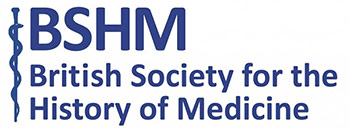Consultant orthopaedic surgeon, Norman Capener had a considerable effect on the work of sculptor Barbara Hepworth (1903-1975), as James Scott explains.
In 1944, Barbara Hepworth’s daughter Sarah developed osteomyelitis of her proximal femur, – a much feared condition with a mortality of about 30% at the time. I was able to discover that she was treated with an infusion of penicillin directly into her thigh, which she recalled to me was “quite painful’. She, thus, would have been among the very first patients to receive penicillin for infection of the bone.
Initially in hospital for about nine month, Sarah underwent many local procedures. Norman Capener was her surgeon. He had a strong interest in sculpture, and he and Hepworth became friends.
With his help, Hepworth attended many operations about which she wrote: “I became completely absorbed by two things: first the extraordinary beauty of purpose and co-ordination between human beings all dedicated to the saving of life…and secondly by the way this special grace of mind and body induced a spontaneous space composition and articulated an an imated kind of abstract sculpture very close to what I had been seeking in my own work.” This resulted in an iconic series of painted drawings of operations, and informed much of her subsequent sculpture. (Drawing by Barbara Hepworth © Bowness)
imated kind of abstract sculpture very close to what I had been seeking in my own work.” This resulted in an iconic series of painted drawings of operations, and informed much of her subsequent sculpture. (Drawing by Barbara Hepworth © Bowness)
A little more than 25 years ago, I founded the Arts Project at the Chelsea and Westminster Hospital, which was shortly to open. There were a great many works of art in the six hospitals which were to close as a result, including a ‘Resurrection’ by Veronese in the chapel of the old Westminster Hospital.
The architects were very encouraging, and during the first few years of the life of the new hospital, we were able to introduce about 1500 new works of art and incorporate many from the previous hospitals. One of the works we borrowed for the Dermatology Department was a sculpture by Barbara Hepworth.
We also created a flourishing program of music, dance, poetry etc., followed later by opera. The great value of this endeavour for everyone — staff, patients and visitors — was clear from the outset. The project has since grown enormously in scope and flourished.
Where were the women?
When I was a medical student at the Middlesex Hospital in London in the mid-1960s, (with wonderful murals by Cayley Robinson in the front hall), I had seen some sculptures in Battersea Park by the sculptor Kenneth Armitage. I particularly remember a piece by him called Pandarus. Many years later, I discovered that he had a studio

in Olympia, West London, and we became friends. After an exhibition to celebrate his 80th birthday at the Yorkshire Sculpture Park, he lent me four sculptures for the hospital, – including Pandarus (right).
Researching a book about him for the publishers Lund Humphries, I noted that a woman called Lillian Somerville had successfully promoted his career and those of many more Modern British Artists internationally for the British Council through the Venice Biennales over a period of 15 years. Little was known about her. Some further research revealed many other women who had promoted all aspects of modern art in this country at that time, again about whom little was known.
A couple of years ago I contributed towards a book for Unicorn Press, describing the work of the arts project and the Chelsea and Westminster Hospital. During lockdown, I prepared a further book for them, simply telling the stories of many of the women to whom my attention had been drawn, including a description of Barbara Hepworth’s connection with Norman Capener.
James Scott is a retired orthopaedic surgeon and emeritus editor of the Bone and Joint Journal. He is the author of The Women who Shaped Modern Art in Britain and a co-author of The Healing Arts: The Arts Project at Chelsea and Westminster Hospital. Both are published by Unicorn Publishing Group.
References
Norman Capener obituary. British Medical Journal, 19 April 1975, p 145
Read, Herbert, Barbara Hepworth, Carvings and Drawings, Section 5. Lund Humphries, 1952
